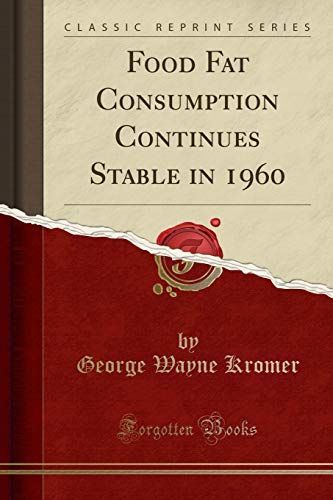
Food Fat Consumption Continues Stable in 1960 (Classic Reprint)
Excerpt from Food Fat Consumption Continues Stable in 1960 In analyzing the total fat intake by Americans it is convenient to divide consumption into the so-called visible and invisible categories. As shown in table 7, consumption of visible fats (butter, lard, margarine, short ehing, cooking and salad oils, and other edible fats and oils) in recent years has accounted for about 38 percent of the total fat intake whereas the invisi ble kinds (dairy products [excluding butter], eggs, animal products, various fruits, vegetables, and cereals) comprised 62 percent. The total annual consumption of food fats (both visible and invisible) has increased to an average of nearly 120 pounds per person in the last sev eral years, compared with 108 pounds in 1935-39 and around 115 pounds during the l9h0's. This increase has occurred despite the conscious efforts of many consumers to limit their intake of this kind of food. The rise in fat usage is attributed to the invisible sector. The use of visible food fats per person has changed remarkably little in the past generation. It averaged h5.5 pounds in 1960, compared with h5.l pounds in 1935-39. In most years it has fluctuated within 10 percent of that level. However, major shifts within the visible fat groups have occurred over the years. We are now consuming more margarine, shortening, cooking and salad oils than in the prewar years but less butter and lard. About the Publisher Forgotten Books publishes hundreds of thousands of rare and classic books. Find more at www.forgottenbooks.com This book is a reproduction of an important historical work. Forgotten Books uses state-of-the-art technology to digitally reconstruct the work, preserving the original format whilst repairing imperfections present in the aged copy. In rare cases, an imperfection in the original, such as a blemish or missing page, may be replicated in our edition. We do, however, repair the vast majority of imperfections successfully; any imperfections that remain are intentionally left to preserve the state of such historical works.